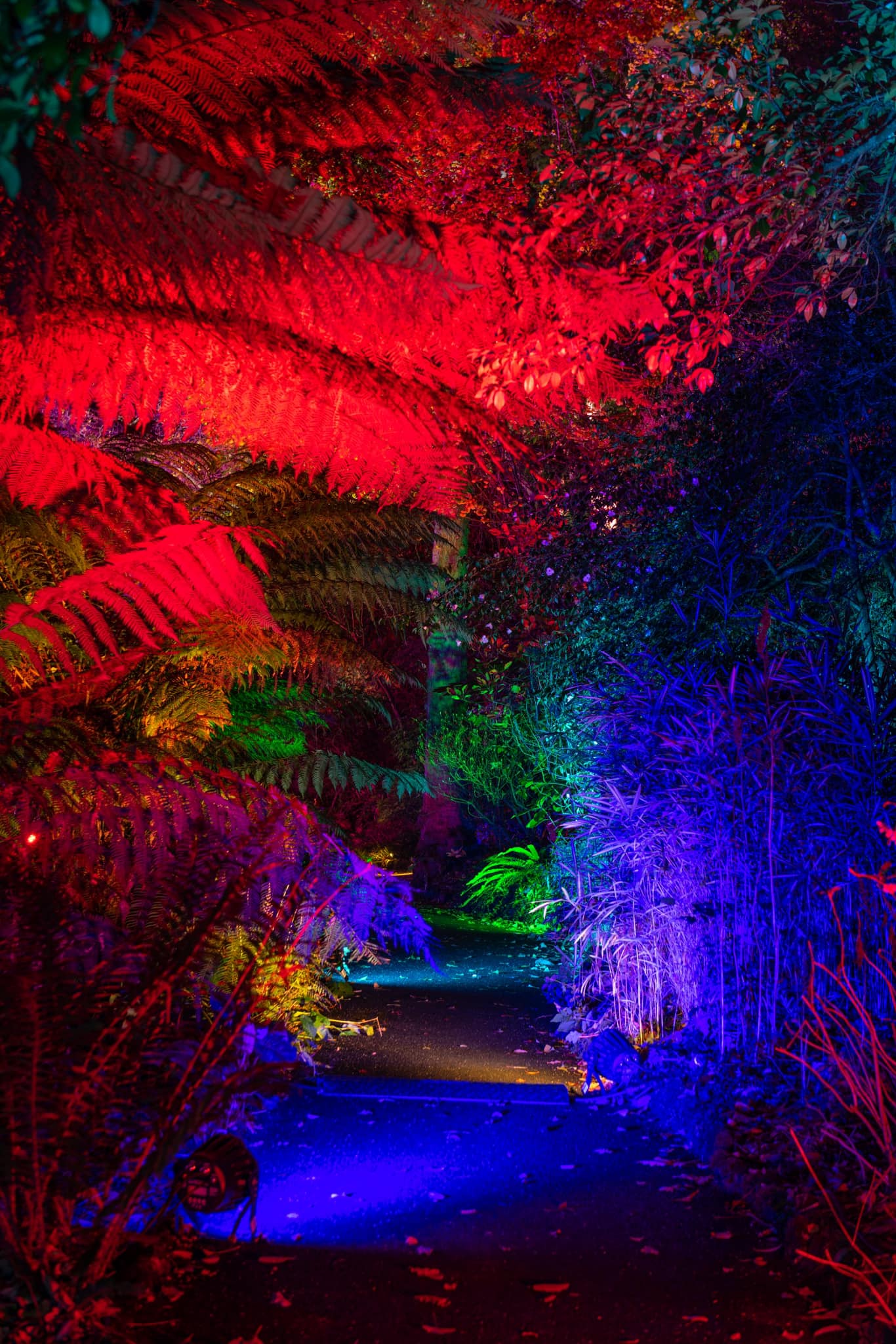Anatomy of a Rig – Ollie Titterington’s ILLUMINATE
Posted on April 4, 2023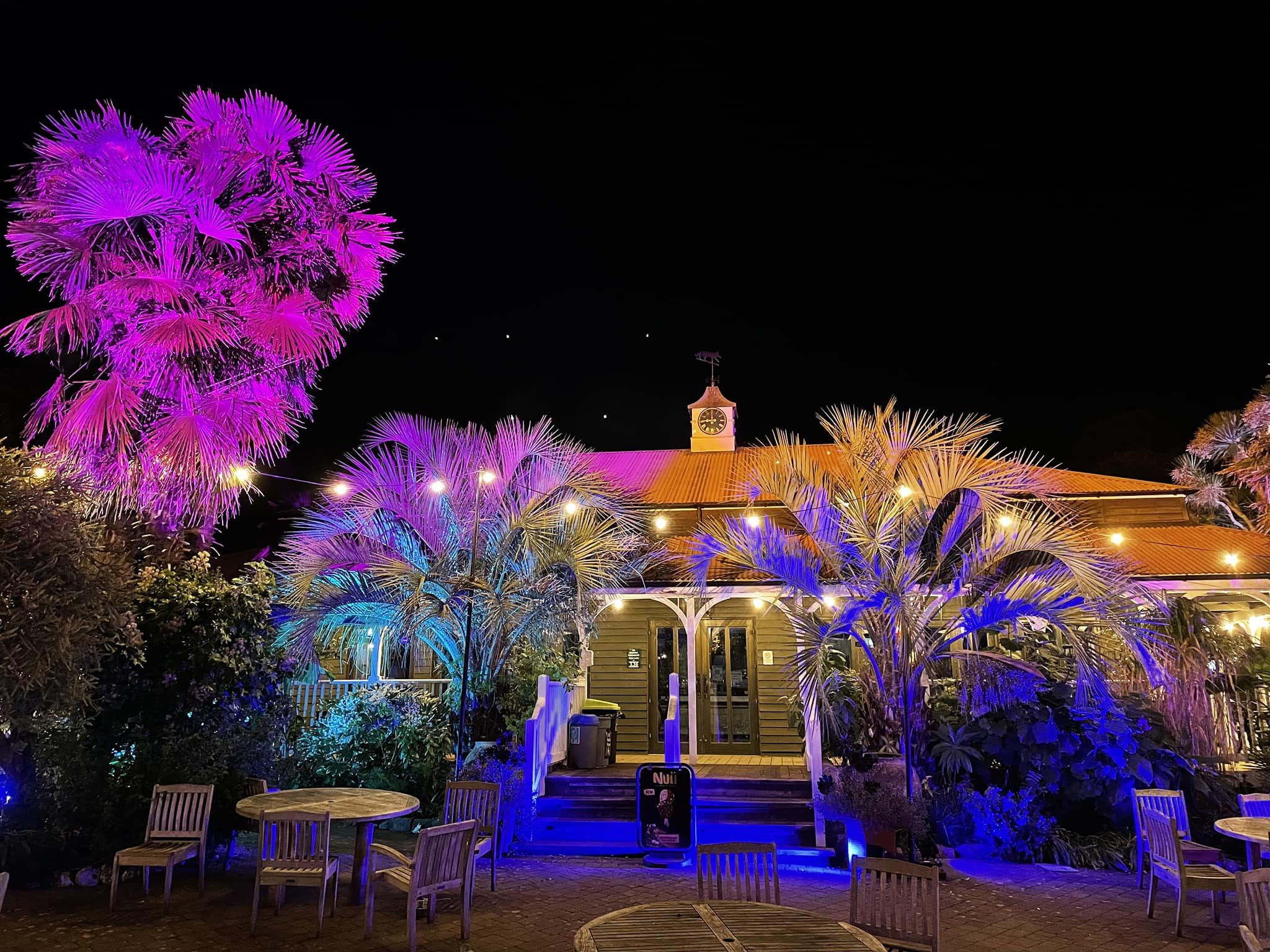
It is an annual tradition in the beautiful seaside community of Dorset in the southwest of England. Late every November, a large section of the historic (it dates back to 1756) Abbotsbury Subtropical Gardens is transformed into a winter wonderland of light for ILLUMINATE.
With its winding paths and vibrant colors playing off the garden’s tall trees and lush foliage, the seasonal walk-through attraction dazzles visitors with its visual variety and splendor. Yet, though its mesmerizing aura may be the stuff of fairytales and dreams, there is nothing “magical” about how ILLUMINATE comes to be every year.
The transformative attraction is the result of careful planning and a lot of hard work by all involved, most notably Ollie Titterington and his team O T Events Technicians who are responsible for the lighting and scenic design, as well as the audio component of ILLUMINATE.
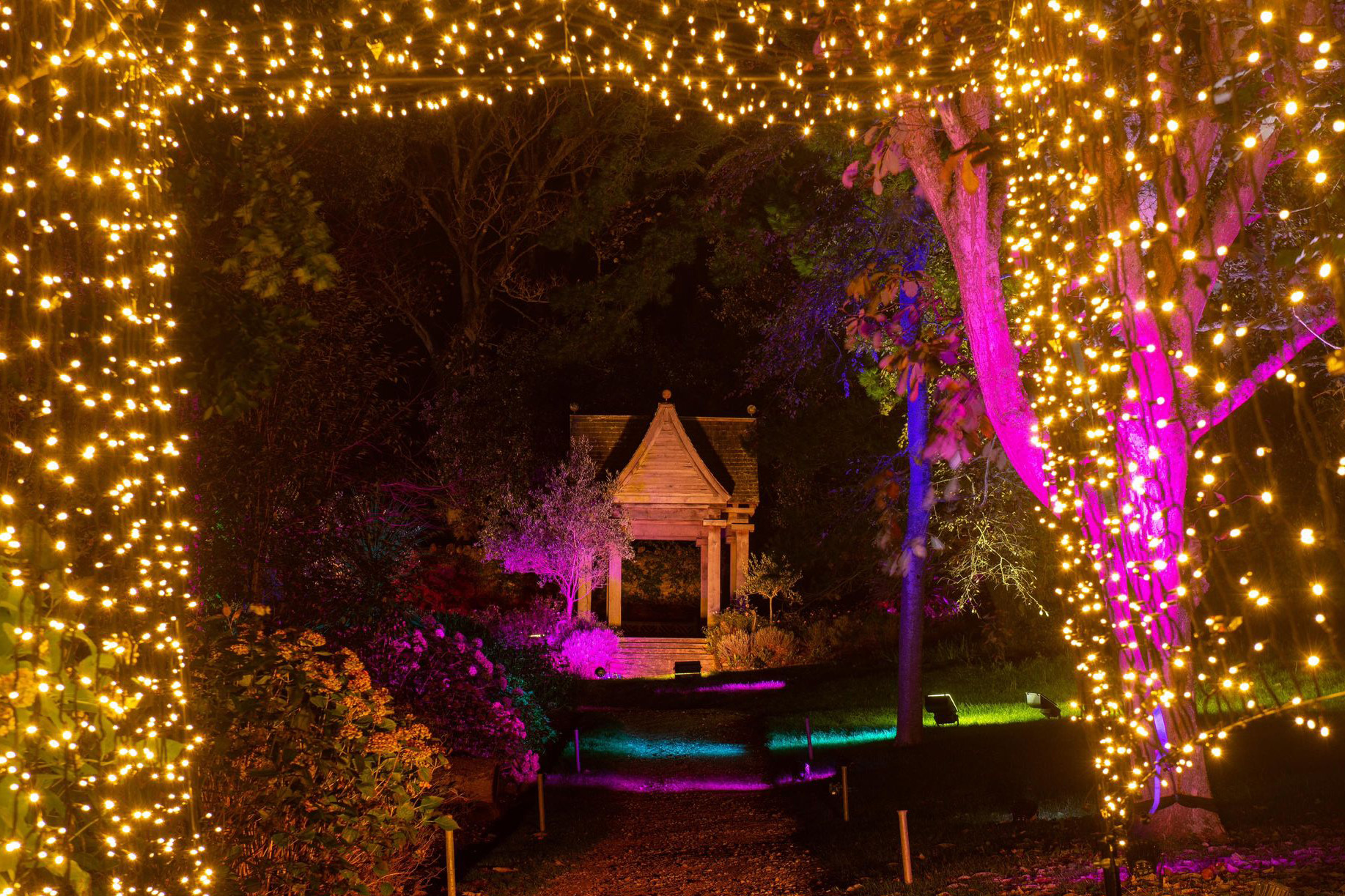
Putting together an event of this magnitude is always a challenge, especially when it involves natural elements as ILLUMINATE does. This vicissitudes of nature, led by southwest England’s weather, can play havoc with the best laid plans for an outdoor attraction.
A section of garden can change its size or configuration from when it’s first surveyed in the summer to when the actual lights are laid out in the fall. Winding garden paths can become more or less uneven depending on storms. Titterington explained how he deals with these and other contingencies when creating this memorable attraction.
Can you give us a timeline regarding how you begin this project? What were your first, second and third steps before you actually set up the rig?
“We are extremely lucky to have the wonderful Abbotsbury Subtropical gardens on our doorstep. This gives us the opportunity to visit regularly, and adjust or design to account for changes With this being a collaborative event, we usually meet with management to discuss any elements which may or may not have worked well in the previous year and to set the dates. At this meeting we often find ourselves wanting to strive to give the visitor more for their money, and therefore usually actively push to make the ILLUMINATE walk longer, more aesthetically pleasing and take in new surroundings.
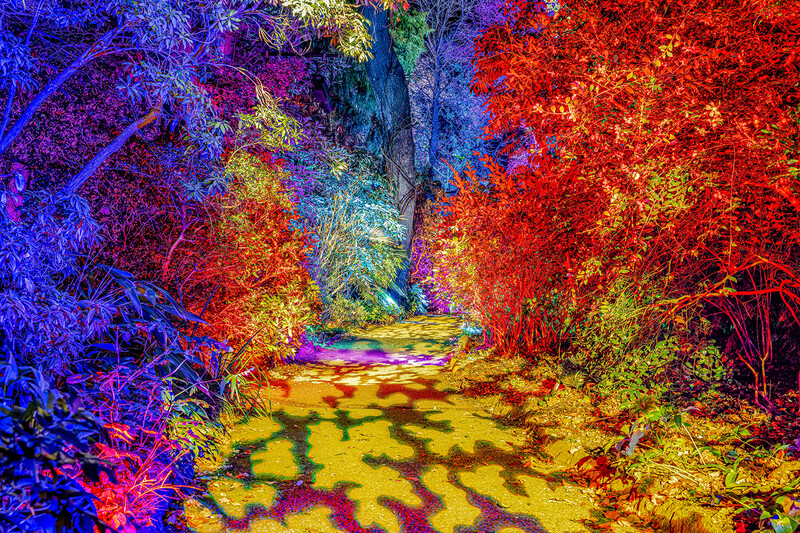
“With new routes we often finding ourselves measuring the new proposed paths to make sure we aren’t pushing the boundaries too much, as we try to keep all of our generated power off of the route and provide as much tranquility as we can. Once the proposed route is agreed and finalized we will then re-visit, usually in May to walk round. At that time, we often discuss what new changes may be happening on our route and further afield with the curator and head gardener. As a team, we are always looking to elevate the gardens to a new level by illuminating them. However, the staff at the gardens do the majority of the heavy lifting by giving us something to work with!
“This aside once the initial first walk is done we will then go back to our unit and put pen to paper. We will try and bring at least two or three new elements or differences on the route. For example, this may involve introducing gobo washes to flood the borders of the beds, as we did this year; or it may mean installing a large ‘Fairylight’ arch! I will then visit around July to walk the route, and I will note any new changes, areas of interest we want to exploit or really accent this year.”
What were the most challenging things about the ground as far as installing your lights was concerned? What was the best thing about the site?
“So, Abbotsbury isn’t a full tarmac site! The majority of the paths are gravel and loose stone. The path widths vary drastically and where we might be fortunate to have three or four meters in some areas, we often are limited to 1.5 meters in others. This creates an element of difficulty when trying to install an event of this size, given the amount of kit we have to install.
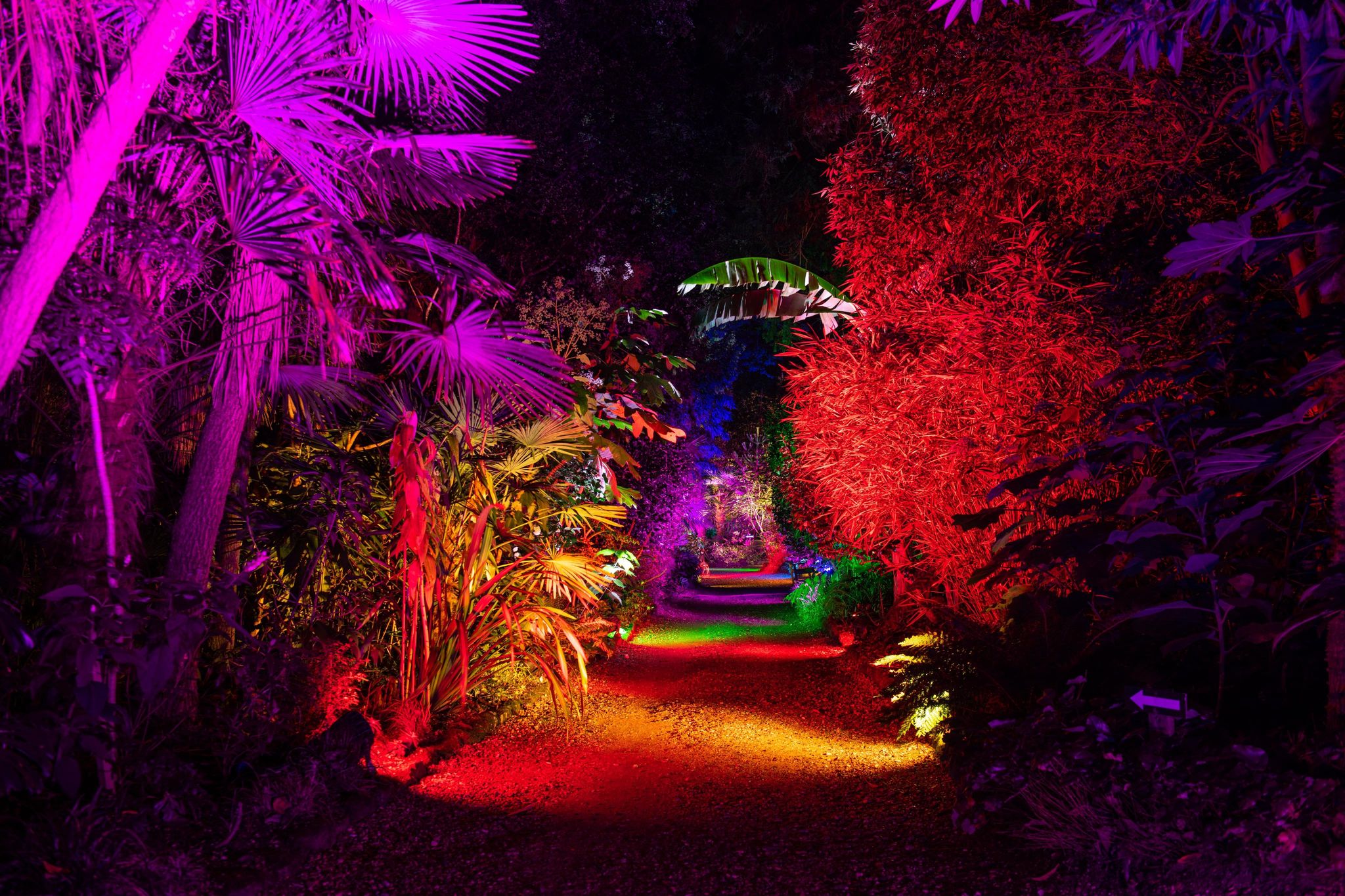
“This year, we opted to purchase a small utility tractor so we could be self-sufficient. This proved a life saver. However, there are some elements in the garden where we struggle to get our vehicles down. In those cases, it’s back to basics – and we have to walk the kit in. Also, given that we are working in a famous garden, we are limited in the amount of ground breaking we can do. So, instead of traditional putlocks, we opted this year to invest in some tree huggers which allowed us to hang overhead fixtures from trees.
“Another concern is, that with this being a microclimate, we often find ourselves wading in damp/well matured beds. So, we have to be careful when installing some units that have a close floor mounting position and clear the ground of any debris. We may even place the units on some plinths if required. This helps massively with moisture ingress.”
ILLUMINATE has some impressive scenic pieces. Can you tell us a bit about what some of those pieces were?
“We built the custom ‘Fairylight’ arch, which I mentioned earlier. It was comprised of a 40-metre high by 3-metere wide arch with over 3,000 meters of warm white fairy lights. Since the ground below this arch was not level, we couldn’t pre-build anything or purchase any off-the-shelf piece. Everything had to be constructed on site. We used black powder coated scaffold to reduce the visual impact during the daytime for visitors.”
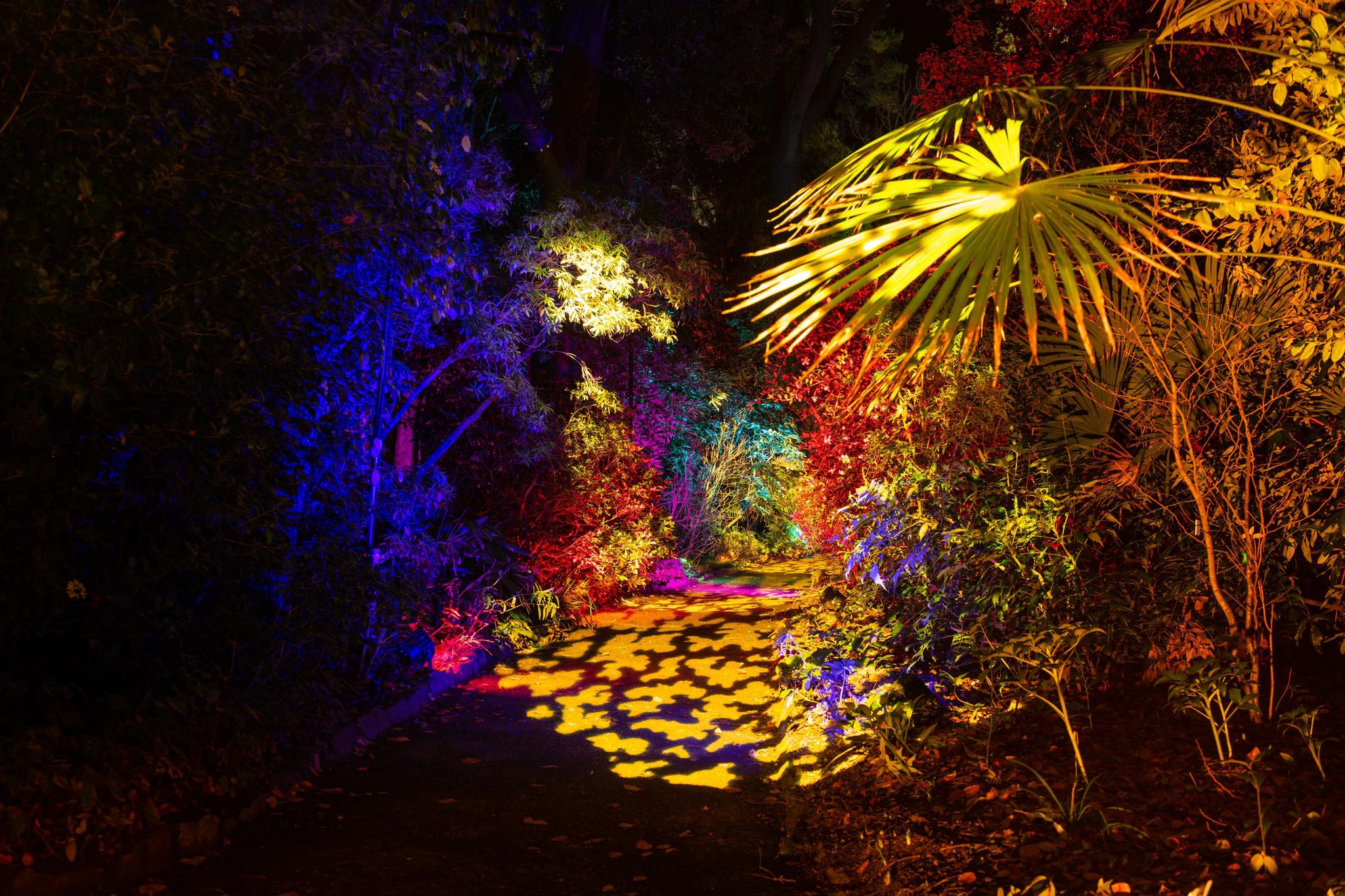
We see that you also had speaker cases look like rocks. How did you do that? Also, how did you select the music that was played through these speakers?
“I tasked my good friend and sound designer Ben Smith with the task of locating a fitting track to do our first timecode show at Abbotsbury justice. My particular points were, I wanted visitors to be taken on a journey. I wanted them to feel emotions through the track and for it to tell a story.”
You also had a 3.23 second time coded lightshow as part of this attraction. Can you tell us about that?
“This was initially loaded onto Cuepoints. We laid down the flags and noted what we wanted to happen at what point. This is easier said than done as with conventional programming we have an ever changing undulating canvas. What may have been a canopy when we start installing in late October could be reduced to something radically different come December when the attraction opens. So, the overall design of the show must have features that can be read 360 degrees by all who view it.”
From a design perspective, what were the most important things you learned from working on this project?
“I won’t stop making constructive changes to colours, maybe even specific focuses of units right up until two weeks into the run. The canvas is ever changing, areas in which you would’ve installed lighting into two or three weeks earlier, may look entirely different. There are many reasons for this, the areas may have been developed by the garden team, or we might’ve unfortunately lost some mature trees due to the good British weather reaping havoc. Abbotsbury is very close to the sea so we do get battered quite regularly. In general, I have learned that the canvas changes daily, and therefore I have to be ready to change elements to suit the new changing conditions. The key is keeping an open mind.”
